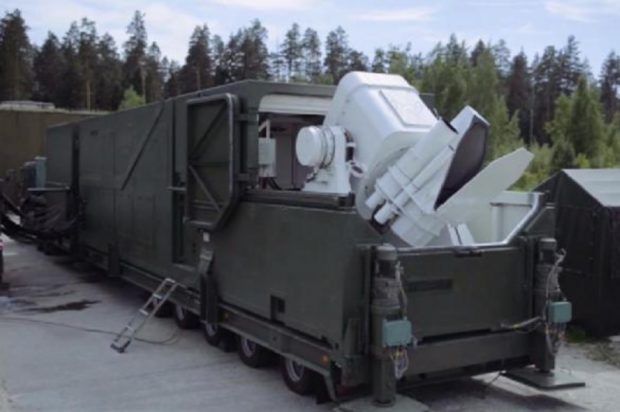Russia claims to have used laser weapons on the battlefield in Ukraine, although the US says it has seen no evidence of this and Ukraine has derided it as propaganda.
Yury Borisov, the deputy prime minister in charge of military development, told Russian TV that a laser prototype called Zadira was being deployed in Ukraine and had burned up a Ukrainian drone within five seconds at a distance of 5km (three miles).
“Our physicists have developed and proceeded to the serial production of powerful laser systems that enable thermal destruction of various means,” he said.
This was in addition to a previous laser system called Peresvet – named after a medieval Orthodox warrior monk – which could be used to dazzle satellites orbiting high above Earth and prevent them from gathering information.
“If Peresvet blinds, then the new generation of laser weapons lead to the physical destruction of the target – thermal destruction, they burn up,” Mr Borisov said.
However, an official with the US Department of Defense said he had not seen “anything to corroborate reports of lasers being used” in Ukraine.
Meanwhile, Ukrainian President Volodymyr Zelensky mocked the Russian claim, comparing it to the so-called “wonder weapons” that Nazi Germany claimed to be developing during World War Two.
“The clearer it became that they had no chance in the war, the more propaganda there was about an amazing weapon that would be so powerful as to ensure a turning point. And so we see that in the third month of a full-scale war, Russia is trying to find its ‘wonder weapon’… this all clearly shows the complete failure of the mission.”
he said in a video address.
The world’s major powers have been working in earnest on laser weapons since the 1990s, looking to overcome the inherent atmospheric problems that blunt targeted laser beams which favor clear air or, ideally, a vacuum to work. On the battlefield they have to function in conditions where thermal blooming, fog, smoke, dust, rain, snow, smog, foam, or purposely dispersed obscurant chemicals can diffuse or deflect them.
For effective CUAS they also have to be sufficiently powerful in a small, mobile package. The power issue has largely been resolved as mobile western lasers with 30 kilowatts of energy have been tested and fielded in limited numbers.
However, targeting remains a problem. Because of the narrow, focused nature of lasers, they have to be aimed finitely at a target and stay on it. This is why Borisov’s claim that Zadira destroyed the Ukrainian drone “in five seconds” is important.
Tracking and then burning up a drone – rather than simply dazzling it – with a laser takes time and only kills one target. Other CUAS approaches like using high power microwave directed energy or jamming drone control links via RF are quicker and potentially area-effective, taking out multiple targets (swarms even) at a time.
Zadira has been around since about 2017. Russia’s Defense Ministry signed a contact in August of that year with the Russian Federal Nuclear Center for research and development of the Zadira-16. Russia also has an anti-satellite laser system called Peresvet. The two may share some targeting and beaming technology but Borisov was keen to point out that Peresvet “blinds” an enemy system whereas Zadira destroys it.

